Home / All Hands on Deck: 2023 In Review
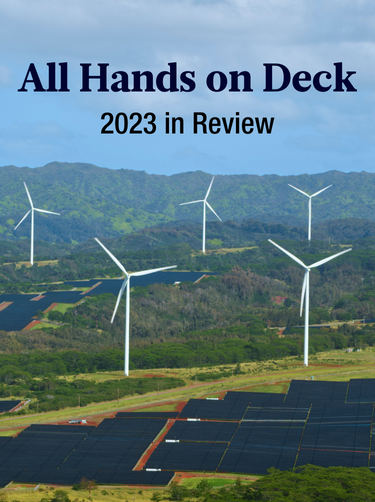
As we close the curtain on 2023, the U.S. Climate Alliance is celebrating another year of bold, state-led climate leadership, partnership, ambition, and action.
In the face of increasing extreme climate impacts — including unprecedented firestorms and wildfire smoke, extreme heat and drought, severe wind and hail, and catastrophic flooding — it’s been all-hands-on-deck for the Alliance’s 25 governors, who together represent approximately 60% of the U.S. economy and 55% of the U.S. population.
This year, the Alliance grew our coalition’s membership and leadership; forged new partnerships with the federal government to speed our net-zero transition; upped our ambition with new commitments to decarbonize America’s buildings; leveraged new tools, projects and convenings to advance climate action across state lines; and shared our story of state-led progress on the global stage at the United Nations Climate Change Conference (COP28).
Below, we highlight a few of these key moments, reflect on our progress, and look ahead to 2024.
As newly elected governors took office in 2023, the Alliance proudly welcomed seven new members to our climate action coalition, each of whom committed or recommitted their states to reducing greenhouse gas emissions consistent with the goals of the Paris Agreement.
The incoming governors of Massachusetts (Maura Healey), Hawaiʻi (Josh Green), Oregon (Tina Kotek), Maryland (Wes Moore), and Pennsylvania (Josh Shapiro) all continued their states’ Alliance membership, while Guam Governor Lou Leon Guerrero and Arizona Governor Katie Hobbs became the newest members of our coalition.
This membership growth came as the Alliance expanded and diversified our leadership for the first time in our history. In May, Washington Governor and founding member Jay Inslee and Maine Governor Janet Mills were named co-chairs, joining New York Governor Kathy Hochul, New Mexico Governor Michelle Lujan Grisham, and California Governor Gavin Newsom on the Alliance’s newly formed executive committee, charged with overseeing the strategic direction of our coalition.
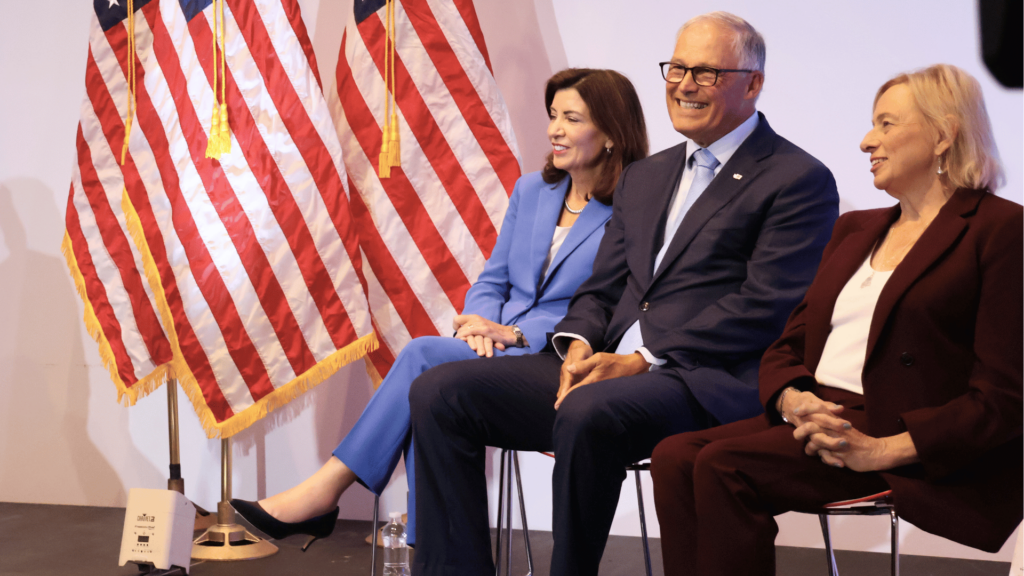
As part of this new heat pump target, members agreed to collectively reach 20 million heat pump installations across the coalition by 2030, with the aim of ensuring at least 40 percent of benefits flow to disadvantaged communities. Notably, several groups of Alliance members also made additional commitments to advance building decarbonization, including multi-state commitments to explore zero-emission standards for space and water heating equipment, Building Performance Standards, and the development and adoption of advanced energy-efficient building codes.
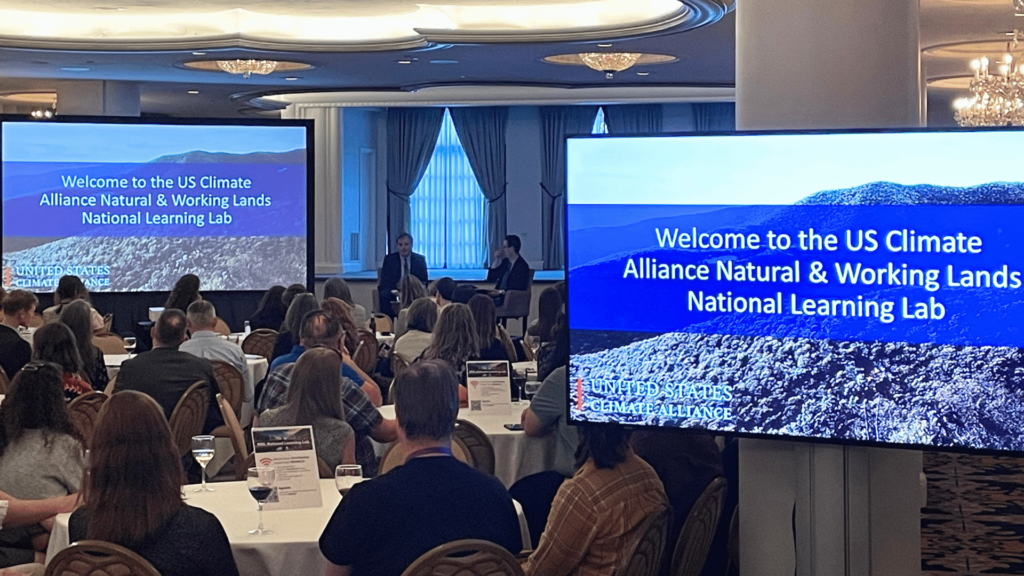
Throughout 2023, the Alliance Secretariat continued to provide a broad range of technical, analytical, policy, and capacity assistance to coalition members to help advance and accelerate high-impact climate action. This included launching our new website and first-of-its-kind Climate Policy Database, which together provide one of the country’s most detailed snapshots of state-led climate action to date.
Alliance states and territories also came together throughout the year to collaborate and learn from one another. This included our Natural & Working Lands (NWL) National Learning Lab, where more than 100 top state officials shared knowledge, solutions, and challenges to catalyze action and bolster implementation of state NWL plans. We also hosted a series of interactive, hands-on sessions and discussions during our multi-day Semiannual Meetings in Washington, DC and Seattle, WA, and covered a wide range of topics, including effective deployment of historic federal climate investments under the Inflation Reduction Act and the Infrastructure Investment and Jobs Act.
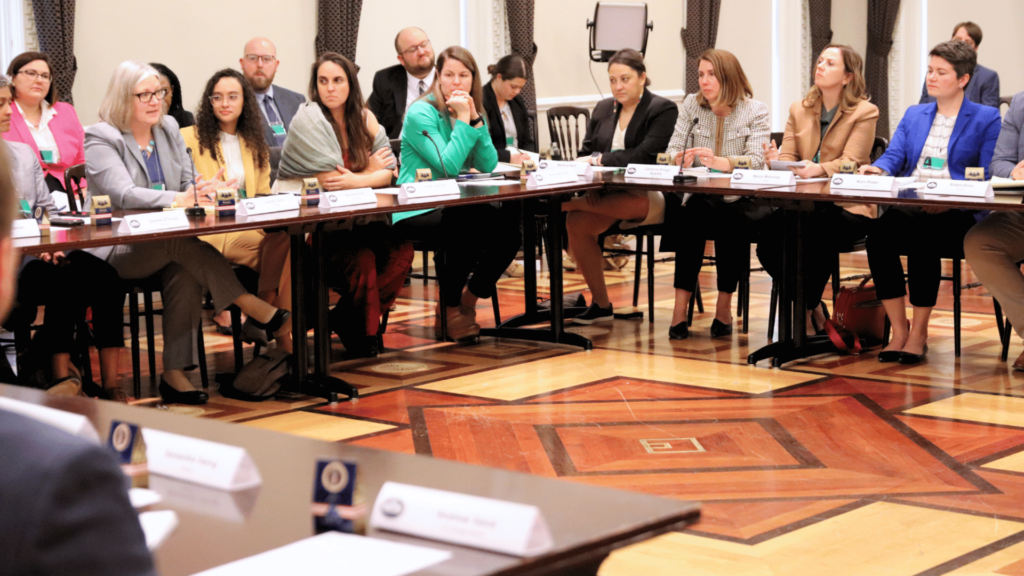
We know that achieving our national climate goals requires ambitious action at all levels of government, which is why the Alliance continued to prioritize work to help support and inform federal policies, programs, and actions in 2023. To kick off the year, our coalition recommended more than 20 specific federal climate actions the federal government can take to empower our climate-leading states and accelerate our transition to a net-zero future.
Throughout the year, the Alliance has partnered with the Biden administration to accelerate progress, and has also harnessed our collective voice in a series of letters to support further action. This included letters providing state feedback on the design and deployment of IRA’s Climate Pollution Reduction Grants; supporting the strengthening of the federal social cost of greenhouse gases, a key metric in assessing the true cost of climate change; and calling for swift finalization of stringent federal vehicle emission standards and strengthened federal power plant rules.
We also joined forces with the White House this spring to launch the Federal-State Buy Clean Partnership, an innovative new effort to tackle emissions in the industrial sector. To date, 13 Alliance states have joined the Partnership, which advances procurement of lower-carbon infrastructure materials in state-funded projects and provides opportunities for deeper collaboration between states and with the federal government to send a harmonized demand signal to the marketplace.
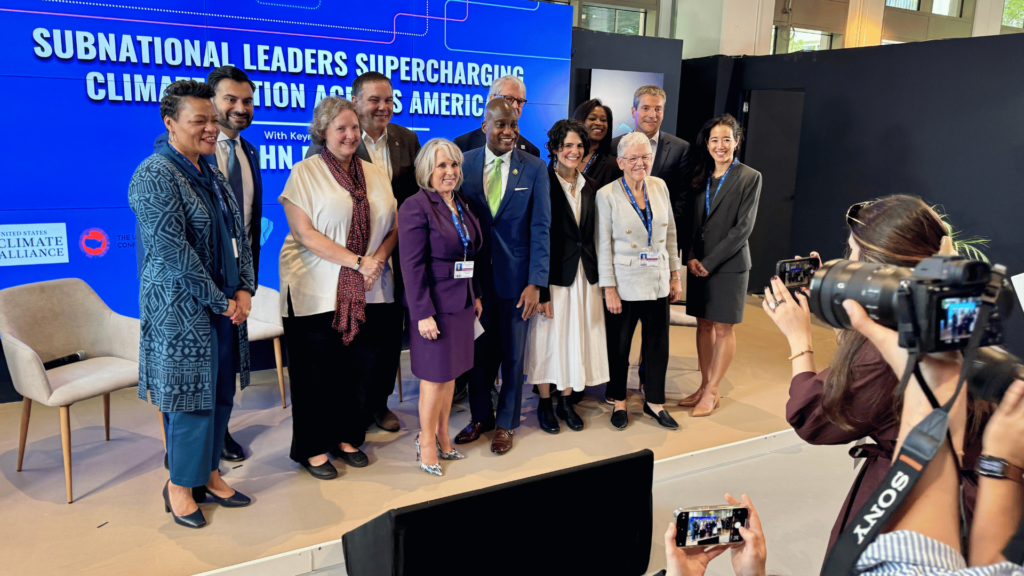
The story of American progress on climate can’t be told without the Alliance’s states and territories, and we were proud to once again share — and showcase — how our members are supercharging climate action at this year’s UN Climate Change Conference in Dubai (COP28).
Our delegation was led by New Mexico Governor Michelle Lujan Grisham, alongside other top climate officials from California, Maryland, and New Mexico. These leaders joined senior Biden administration officials, including White House National Climate Advisor Ali Zaidi and Senior Advisor to the President for Clean Energy Innovation and Implementation John Podesta, at several events and convenings. These included panels at the U.S. Center focused on states, cities, and businesses delivering on the Inflation Reduction Act and accelerating climate innovation and ambition and a discussion among top women leaders in the Alliance and our partner organizations. The week culminated with an event featuring the release of new data projecting that Alliance members will reduce collective greenhouse gas emissions 26% by 2025 below 2005 levels and achieve their near-term climate target.
Notably, this data, which was included in our Annual Report, also found that the Alliance reduced collective net GHG emissions by 18% between 2005 and 2021, continuing the coalition’s trend of declining emissions over 15 years. Additionally, it demonstrated a clear pathway for Alliance members to meet their collective emissions reduction goals of reducing net GHG emissions at least 50-52% by 2030 and reaching overall net-zero GHG emissions no later than 2050, both below 2005 levels, by working with one another and in coordination with the federal government.
Achieving our collective climate goals means ensuring all workers and families are better protected from the climate crisis, making communities more resilient to future extreme weather events, and delivering more public health and economic benefits beyond what Alliance members have already achieved. While we’re encouraged by our progress, we know more action is urgently needed across all sectors of the economy to make these goals a reality. We also recognize that the Inflation Reduction Act provides a once-in-a-generation opportunity to turbocharge state-led climate action, and the Alliance will continue to move swiftly to leverage these historic investments and deliver on the law’s promise.
With all of this in mind, and with renewed resolve and focus, Alliance members will continue working with one another and the federal government to take the next generation of actions to ensure a safe and healthy planet for all in 2024 — and beyond.
Launched in 2017 by the governors of Washington, New York, and California to help fill the void left by the U.S. federal government’s withdrawal from the Paris Agreement, the Alliance has grown to include 24 governors from across the U.S. representing approximately 60 percent of the U.S. economy and 55 percent of the U.S. population. Governors in the Alliance have pledged to collectively reduce net greenhouse gas emissions by at least 26-28 percent by 2025, 50-52 percent by 2030, and 61-66 percent by 2035, all below 2005 levels, and collectively achieve overall net-zero greenhouse gas emissions as soon as practicable, and no later than 2050.
The Alliance’s states and territories continue to advance innovative and impactful climate solutions to grow the economy, create jobs, and protect public health, and have a long record of action and results. In fact, the latest data shows that as of 2023, the Alliance has reduced its collective net greenhouse gas emissions by 24 percent below 2005 levels, while increasing collective GDP by 34 percent, and is on track to meet its near-term climate goal of reducing collective greenhouse gas emissions 26 percent below 2005 levels by 2025.
###